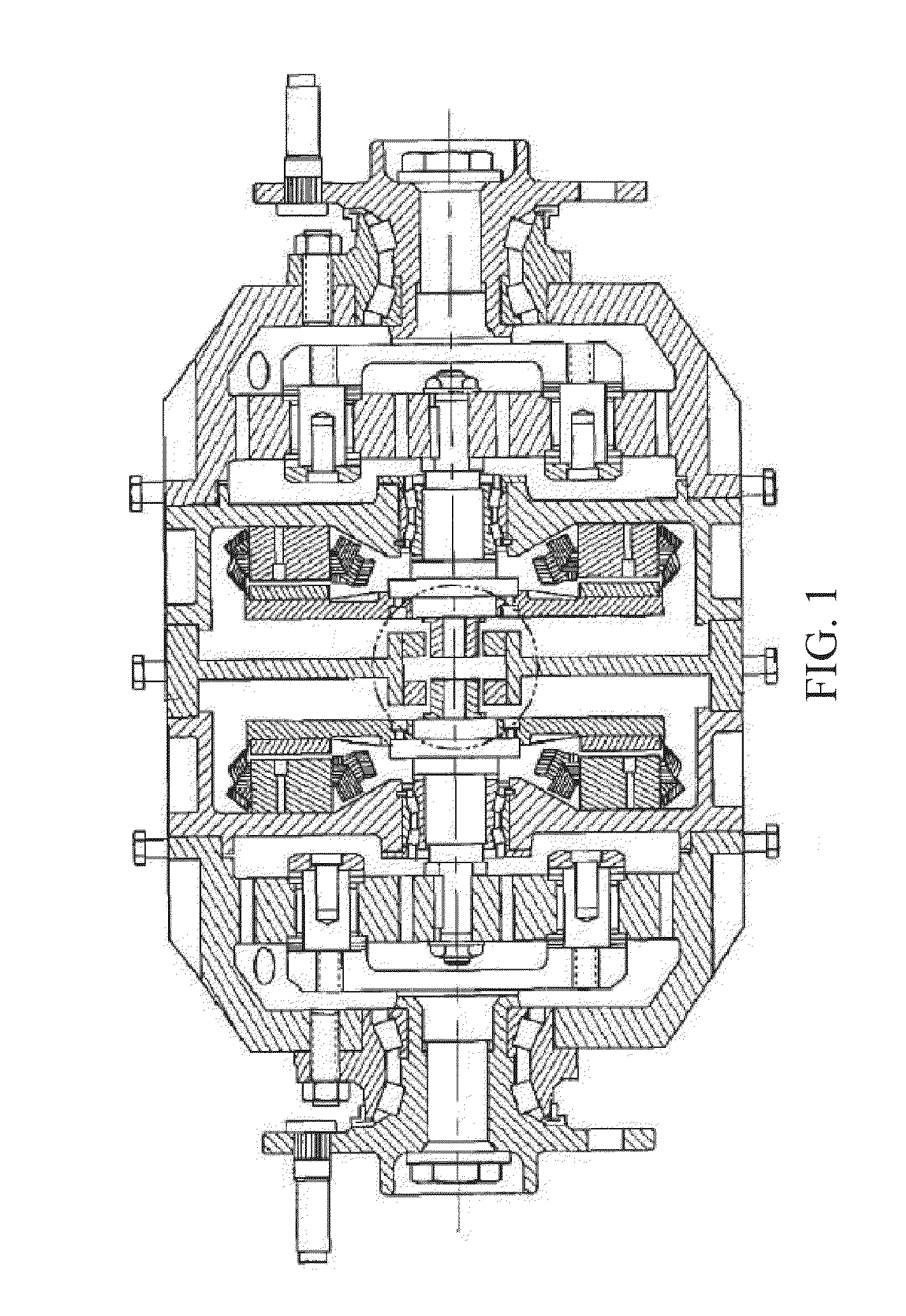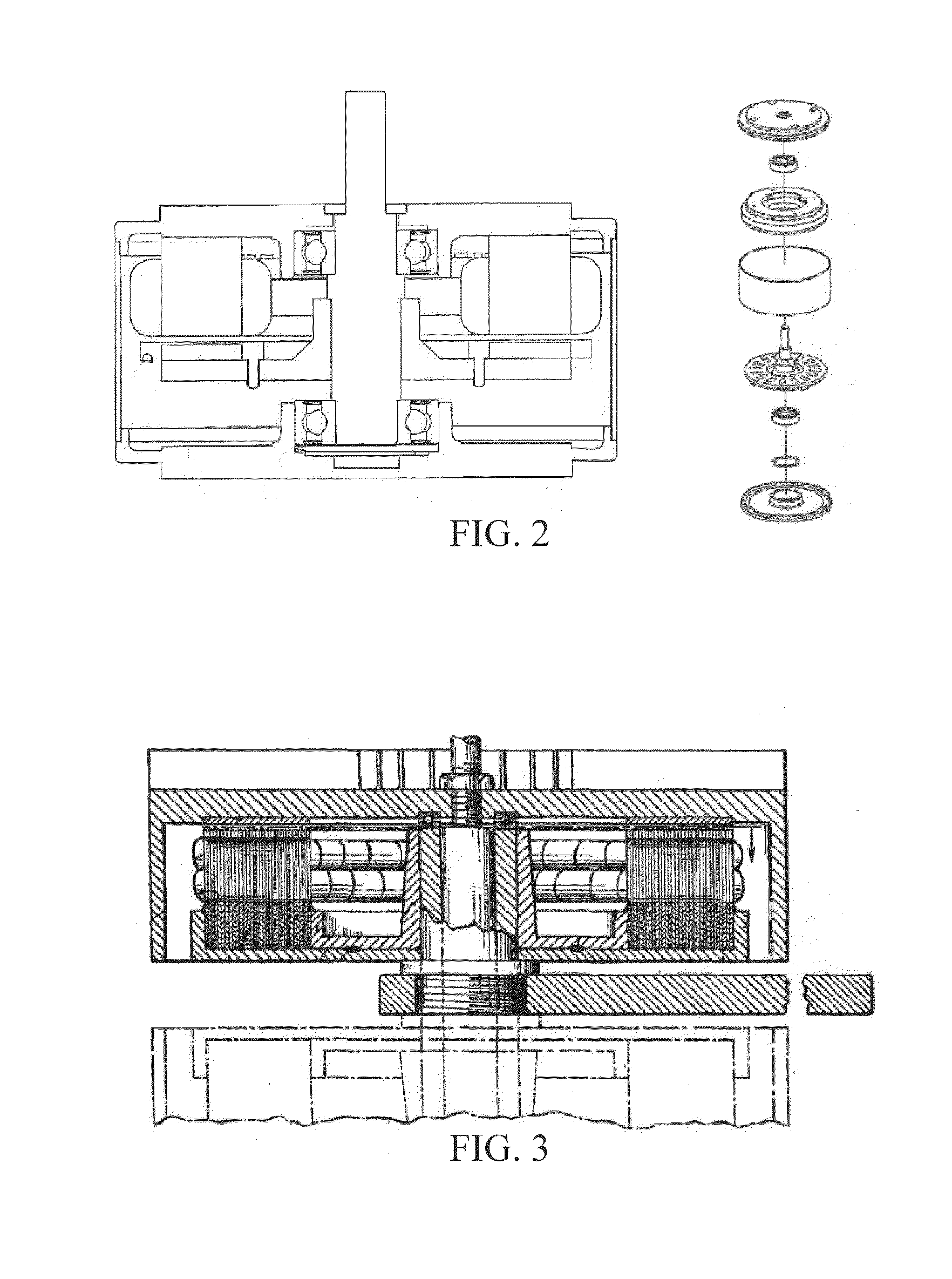Stator assembly structure for axial flux electric machine
a technology of axial flux electric machines and assembly structures, which is applied in the direction of mechanical energy handling, magnetic circuits characterised by magnetic materials, and magnetic circuit shapes/forms/construction, etc., can solve the problems of heat dissipation of copper loss of coils, power loss may still be produced, and the effect of reducing implementation costs and easy generation of concave grooves
- Summary
- Abstract
- Description
- Claims
- Application Information
AI Technical Summary
Benefits of technology
Problems solved by technology
Method used
Image
Examples
third embodiment
[0051]FIG. 7 is a schematic view of a stator structure according to the present invention. Referring to FIG. 7, in mass production, if the annular silicon steel pie is fabricated by punching, the silicon steels with the ascending sizes are stacked to form the pie stator components 15 with the identical single or multiple coil accommodation slots 12 and the tenon 14 and the engaging slot 13. Then, the pie stator components 15 are connected by a plurality of sectional pie fixing members 16 in the annular direction into the annular stator to form a complete-circle-shaped silicon steel. Each stator component 15 is buckled with the tenon 14 and the engaging slot 13 to avoid disengagement. The complete-circle-shaped silicon steels formed by the stator components 15 engaged together are stacked to form a barrel stator 1 in a manner of plane matching. The barrel stator 1 has a central line 10 and the pie may also be fabricated by a powder metallurgy process with a soft magnetic material. Th...
fourth embodiment
[0052]FIG. 8 is a schematic view of a stator structure according to the present invention. Referring to FIG. 8, the fixing member 16 of the present invention may also be welded on the junction surface of the stator 1 and the stator seat by the steel sheet or round bar with a smaller size. The stacked pie silicon steel is welded on the steel sheet or round bar one by one without getting scattered, and the steel sheet is drilled with the round holes to enhance the combination force of engaging the stator 1 and the stator seat (not shown) and avoid getting loose. Or, the fixing member 16 may be a column, which is firstly fixed in the round hole of the stator and is fixed with the stator and the column to one piece during the fused-casting of the stator seat.
[0053]FIG. 9 is a schematic view of a combination of the stator and the stator seat with water cooling heat dissipation according to an embodiment of the present invention. Referring to FIG. 9, the stator 1, the cooling water pipe 8...
PUM
 Login to View More
Login to View More Abstract
Description
Claims
Application Information
 Login to View More
Login to View More - R&D
- Intellectual Property
- Life Sciences
- Materials
- Tech Scout
- Unparalleled Data Quality
- Higher Quality Content
- 60% Fewer Hallucinations
Browse by: Latest US Patents, China's latest patents, Technical Efficacy Thesaurus, Application Domain, Technology Topic, Popular Technical Reports.
© 2025 PatSnap. All rights reserved.Legal|Privacy policy|Modern Slavery Act Transparency Statement|Sitemap|About US| Contact US: help@patsnap.com



